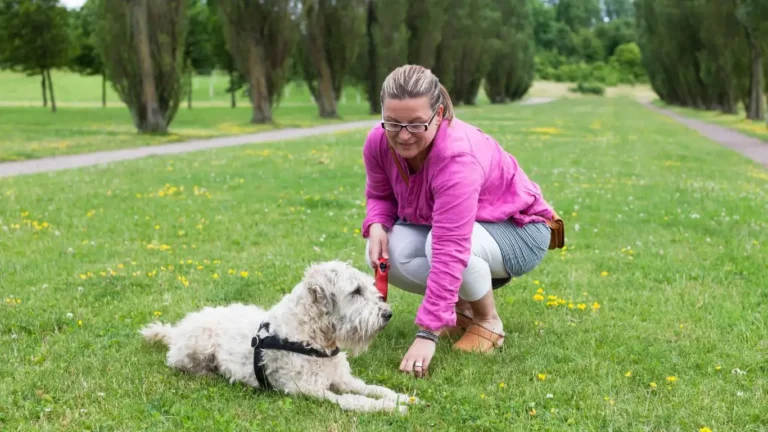Urgent Warning: Why Is My Dog Vomiting and Shaking Today?
Ever caught yourself Googling, “Why is my dog vomiting and shaking?” and spiraling down a rabbit hole of scary possibilities? Yeah, I’ve been there too—both as a dog mom and as someone who’s spent countless hours in the exam room as a veterinary assistant with a focus on nutrition. It’s scary when your pup’s not acting like themselves. Vomiting and shaking can look downright alarming, especially when they come on suddenly. But don’t panic—there’s a whole range of reasons this could be happening, some serious, some not so much. Let’s break it all down together in a way that actually makes sense, without all the clinical jargon.
Common Causes of Vomiting and Shaking in Dogs

1. Tummy Troubles: The Usual Suspects
Let’s start with the obvious—dogs love to eat stuff they shouldn’t. I can’t count the number of times I’ve seen a perfectly healthy pup come in shaking and throwing up after digging through the trash or munching on a mystery object from the backyard. This is often what we call dietary indiscretion—basically a fancy way of saying, “they ate something gross.”
- Greasy table scraps
- Old or spoiled food
- Foreign objects like socks or toys (yep, it happens more than you’d think)
These situations can lead to gastrointestinal upset, which in turn can cause nausea, vomiting, and yes, even shaking. Think of it like your dog’s version of food poisoning. Not fun for anyone.
2. Stress or Anxiety
Believe it or not, emotional stress can have very real physical symptoms in dogs. One German Shepherd I worked with used to get the shakes and toss his breakfast any time his owner left town. It wasn’t a food issue—it was full-on separation anxiety. Dogs can be sensitive souls, and stress from changes in the household, loud noises (hello, fireworks), or even a vet visit can cause trembling and vomiting.
When You Should Worry

1. Toxic Ingestion
This one is a biggie. If your dog is vomiting and shaking after being near chocolate, xylitol (found in sugar-free gum), grapes, or cleaning supplies, get to the vet immediately. These can be life-threatening toxins, and time is of the essence.
Quick list of common household toxins to watch for:
- Chocolate (especially dark chocolate)
- Xylitol (in gum, peanut butter, some baked goods)
- Grapes and raisins
- Onions and garlic
- Antifreeze
Shaking is often one of the first signs the body is overwhelmed—whether from toxins or metabolic issues—so trust your gut if something feels off.
2. Underlying Health Conditions
Sometimes vomiting and shaking are signs of a deeper health problem. I’ve seen dogs with pancreatitis, kidney failure, or addison’s disease present this way, and those require medical treatment fast. That’s why your vet will usually ask for a full history and might recommend blood work to rule things out.
If your dog seems lethargic, refuses food, or the symptoms persist more than a day—or return repeatedly—it’s time to call the clinic. Don’t wait and see. The earlier we catch something, the better the chances of recovery.
What You Can Do at Home (And When Not To)

Try This First (Only if Symptoms Are Mild)
If your pup seems mostly okay—bright-eyed, wagging tail, no signs of pain—here are a few things you can do before rushing to the vet:
- Withhold food for 6–12 hours to give their tummy a rest
- Offer small amounts of water frequently (ice chips work great too)
- After fasting, start a bland diet: boiled chicken and rice is a classic
In my experience, some pups bounce back with just these simple changes. But it’s crucial to monitor closely—if they’re not improving or start getting worse, that’s your cue to head in for a professional check.
Red Flags You Should Never Ignore

Persistent Symptoms
Alright, let’s get real for a second—if your dog has been vomiting and shaking for more than 24 hours, it’s not just an upset stomach anymore. I’ve worked with a lot of pet parents who waited “just one more day,” and we ended up dealing with dehydration or something more serious that could’ve been caught sooner. Dogs hide pain like pros, so trust me when I say, don’t wait too long to get help.
Here’s when it’s time to call your vet—like, immediately:
- Repeated vomiting over several hours
- Blood in vomit or stool
- Extreme lethargy or collapse
- Shaking that doesn’t subside with rest
- Swollen abdomen or signs of pain when touched
These signs can point to things like gastric torsion (aka bloat, which is a true emergency), parvovirus in puppies, or organ issues that require immediate treatment. It’s always better to be safe than sorry.
Why Is My Dog Vomiting and Shaking? A Deeper Look at Less Obvious Causes

Motion Sickness or Travel Stress
Yep, just like some humans, dogs can get car sick. If your pup starts trembling and drooling (and then—bam—vomits all over the back seat), it’s likely motion sickness. I had a sweet little Maltese named Daisy come into the clinic once, trembling and looking miserable. Turns out, she had just taken her first road trip. After ruling out other causes, we figured out she was just a nervous traveler.
Here’s what you can try if your furball hates the car:
- Keep car rides short at first and gradually build up time
- Use a secure crate or harness to reduce motion
- Talk to your vet about safe anti-nausea meds
Low Blood Sugar (Hypoglycemia)
This one’s especially common in tiny breeds like Chihuahuas or Yorkies. If their blood sugar dips too low, they can become shaky, disoriented, and even start vomiting. I remember one case where a toy poodle puppy started trembling and vomiting mid-play—classic hypoglycemia. We gave her a bit of karo syrup and got her stabilized, but it was a good reminder that nutrition timing really matters for these little guys.
How Nutrition Plays a Role in Preventing Digestive Issues

Feeding the Right Diet (and Sticking to It)
This one hits close to home for me. As someone who’s worked with veterinary nutrition, I’ve seen firsthand how food can either help your dog thrive or trigger all kinds of problems. Switching foods too quickly, feeding cheap brands with fillers, or giving too many table scraps? Recipe for disaster. Even high-quality kibble can cause problems if your pup has food sensitivities.
Some of the most common dietary triggers I’ve seen include:
- Grains (especially wheat or corn)
- Beef or chicken (yep, the classics!)
- Dairy products
- Artificial colors and preservatives
If your dog seems to have repeat tummy issues, talk to your vet about doing an elimination diet or switching to a limited ingredient diet. I’ve watched dogs turn completely around once they got on the right food plan—it’s honestly amazing.
Hydration Matters More Than You Think
Vomiting and shaking can lead to quick fluid loss, and dehydration makes everything worse. If your dog isn’t drinking, try offering ice chips or bone broth to encourage sipping. I always tell pet parents to check for signs of dehydration like dry gums or skin that doesn’t bounce back when gently pinched. If you’re not sure, don’t guess—your vet can assess and provide fluids if needed.
Final Thoughts Before You Panic (Or Call the Vet)
So back to that burning question: Why is my dog vomiting and shaking? There’s no one-size-fits-all answer, but armed with a little knowledge (and maybe a bit of chicken and rice), you can feel a lot more confident. Whether it’s something simple like nerves or something serious like toxicity, knowing what to look for makes all the difference. And don’t forget, you know your dog best. If something feels off, it probably is.
Stay tuned—there’s more we can dive into, especially when it comes to prevention and long-term care. But for now, take a deep breath, give your pup a cuddle, and trust your gut (and theirs).
Keeping Your Pup Healthy: Preventing Vomiting and Shaking Before It Starts

Routine Care Makes a Huge Difference
Let me tell you—prevention really is everything. Over the years, I’ve seen how the most stable, healthy dogs often belong to pet parents who stay on top of the basics: regular checkups, consistent diets, proper hydration, and avoiding table scraps. It’s not glamorous, but it works.
One thing I always tell new pet parents is: dogs thrive on routine. Sudden changes to food, daily schedule, or environment can lead to stress—and stress can bring on that awful combo of vomiting and shaking. Just like us, they need stability to feel safe.
- Stick to regular meal times (don’t free-feed if your pup has a sensitive stomach)
- Introduce any new food gradually over 7–10 days
- Keep their environment calm and secure—especially during storms, fireworks, or travel
Even something as simple as a thunderstorm or loud party can be overwhelming for some dogs. I’ve had clients swear by calming aids like thunder shirts or natural supplements, and honestly, they can make a world of difference.
Build a Solid Emergency Toolkit
It’s a good idea to have a few essentials at home for when tummy issues strike. In the clinic, we’d always recommend a basic “doggy first aid” drawer with:
- Electrolyte solution (like unflavored Pedialyte)
- Plain canned pumpkin (great for upset stomachs)
- Boiled chicken and white rice
- A thermometer (normal dog temp is 101–102.5°F)
- Contact info for your vet and the nearest emergency clinic
It’s not about self-diagnosing—but being prepared can keep things from getting worse while you figure out your next step. If your dog is just mildly off, these tools can help monitor and soothe them. But if anything escalates? Pick up that phone and call your vet. You’ve got instincts for a reason.
Why Is My Dog Vomiting and Shaking? What Your Vet Will Look For

The Diagnostic Process: Not Just Guesswork
When you take your pup to the vet, they’ll do more than just give a quick exam. Most likely, they’ll ask you questions about diet, behavior, recent changes, and any known exposure to toxins or illnesses. I used to take notes like a detective—we’re talking Sherlock Holmes with a stethoscope.
Depending on symptoms, your vet might suggest:
- Blood work (to check for infection, organ function, or metabolic imbalances)
- X-rays or ultrasound (to rule out blockages or bloat)
- Fecal tests (to identify parasites or bacterial overgrowth)
- Urinalysis (to check kidney health or signs of toxins)
Getting a full picture is important. One time, a Golden Retriever came in shaking and vomiting, and it turned out to be an early sign of Addison’s disease—a tricky condition to catch, but totally manageable once diagnosed.
When to Ask for a Second Opinion
Here’s a little truth from inside the industry—not every vet will have the same approach or catch everything the first time. If your dog’s symptoms keep coming back, or if something just doesn’t sit right with you, it’s absolutely okay to get a second opinion. You’re your dog’s best advocate, and your voice matters.
Especially with recurring issues like vomiting and shaking, persistence can lead to answers. Chronic GI issues, food intolerances, and hormonal imbalances are often missed in quick visits. Don’t give up until you’ve got clarity.
Reliable Resources You Can Trust
There’s a lot of noise online, but there are some truly great sources backed by veterinarians and specialists. I always recommend checking out:
- American Gastroenterological Association
- American Veterinary Medical Association (AVMA)
- Cornell University College of Veterinary Medicine
Stay curious, but stay grounded. Facebook forums and random Reddit threads can be comforting—but they aren’t substitutes for science-based answers from real professionals.
Final Thoughts: You’re Not Alone in This
If you’ve made it this far, I just want to say—you’re doing amazing. Asking questions like “Why is my dog vomiting and shaking?” shows how much you care. And honestly, as someone who’s worked closely with both pets and their people, that’s what really makes the difference.
Whether it’s a simple fix like calming their nerves, or a deeper health issue that needs ongoing care, your love and attention can literally be life-saving. Keep asking, keep observing, and don’t be afraid to trust your gut. Our dogs can’t speak, but they sure know how to let us know when something’s off. And lucky for them—they’ve got you.
Disclaimer: This article is for informational purposes only and does not replace professional veterinary advice. If your dog is vomiting and shaking, consult your veterinarian for an accurate diagnosis and personalized treatment plan.





